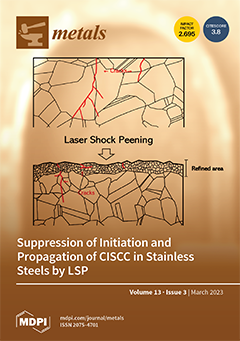The jarosite family of minerals are part of the alunite supergroup with the general formula AB
3(TO
4)
2(OH)
6. Jarosite family minerals are known to incorporate silver (Ag), but the extent to which this occurs, and at what
[...] Read more.
The jarosite family of minerals are part of the alunite supergroup with the general formula AB
3(TO
4)
2(OH)
6. Jarosite family minerals are known to incorporate silver (Ag), but the extent to which this occurs, and at what temperature range, is not well constrained. To address this knowledge gap, jarosite compounds with the
A site filled with K, Na, Ag and H
3O were synthesised at 22 °C, 97 °C and 140 °C to simulate low-, moderate- and high-temperature environments, respectively. The compounds were characterised by XRD, SEM, chemical analysis and Raman spectroscopy. All of the synthesised compounds took up Ag. In general, higher temperatures of synthesis increased alkali and Ag occupancy of the
A site of the products. Silver contents increased with the increasing concentration of Ag in the starting solutions at all temperatures. The order of preference for occupancy of the
A site in the synthesised solids is K > Na > H
3O > Ag at all temperatures, which is consistent with the reported order of ΔGf of −3309 kJ/mol, −3270 kJ/mol, −3247 kJ/mol and −2948 kJ/mol for jarosite, natrojarosite, hydroniumjarosite and argentojarosite, respectively. The results of this study show that Ag can be incorporated in jarosite and natrojarosite at low-to-high temperatures, and therefore, jarosite family minerals can be important stores of Ag in in natural and engineered environments.
Full article





